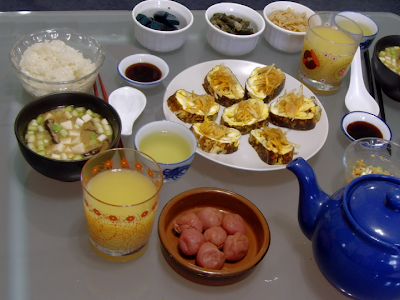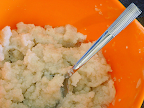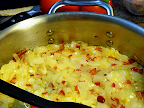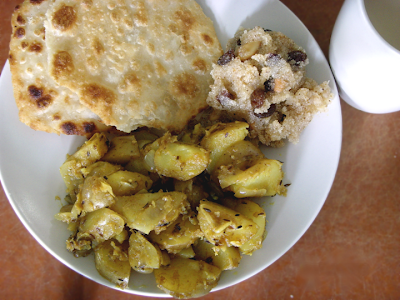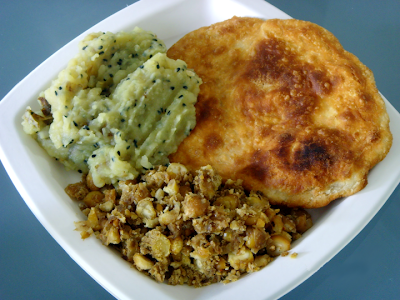Background
We found a good reference for Japanese breakfasts in a New York Times article by David Kahn from 1992. It provided a lot of ideas about what the meal should include. We chose not to include fish because we could not find any that was reasonably priced and fresh.
We used recipes from Japanese Cooking: A Simple Art by Shizuo Tsuji for the miso soup and rolled omelet. The pickled vegetables, plums, fresh tofu, and various other side dishes were purchased at a specialty Japanese market, though some suitable items are probably available at most Asian markets. We also added natto(1, 2) to the menu for something traditional and adventurous.
Menu
- Rice - Short grain white rice, steamed in rice cooker
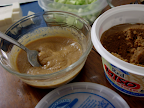 Miso Soup - Many miso soup recipes exist online. We feel no need to add to the clutter. A useful technique in Japanese Cooking that is worth passing along is to mix the miso with half as much stock to break up lumps, before mixing it into the soup.
Miso Soup - Many miso soup recipes exist online. We feel no need to add to the clutter. A useful technique in Japanese Cooking that is worth passing along is to mix the miso with half as much stock to break up lumps, before mixing it into the soup.- Dashi-maki Tamago (Rolled Omelet) - Making a rolled omelet is difficult to describe after a single attempt. We recommend the reader consult a Japanese cookbook for illustrations of the techniques. The basic idea of the Japanese omelet is to roll an omelet and then pour another omelet and let the uncooked egg attach to the base of the rolled omelet and then roll them together. The process is repeated until you use up all of your egg mixture. The omelet is then shaped in a bamboo mat and allowed to cool for a minute. It is them sliced and served topped with shredded daikon that has been marinated in soy sauce.
Making this omelet is an acquired skill. First, the pan used to make the omelet is a special pan that shapes the omelet. Mistakes I made in this attempt were over cooking the egg. A four egg omelet may also have been too large for the pan. In future attempts I would use 2 or 3 eggs. I anticipate making several more attempts before I get the hang of it. - Natto - We got advice for preparing natto from Natto Land.
- Nori
- Tsukemono (Pickles) - cucumbers, bamboo shoots, eggplants, and plums (umeboshi)
- Green tea and orange juice
Results and Discussion
This breakfast very easy with the exception of the omelet. Purchasing all of the pickled dishes saves a lot of time (but costs a lot of money). The miso soups goes together very quickly. Only rice takes time to prepare.
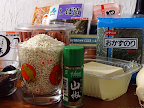 The omelet is not difficult to do if you have made omelets before. The difficulty lies in combining the rolls into a single continuous piece. Messing this part up only affects the cook's pride but not the taste.
The omelet is not difficult to do if you have made omelets before. The difficulty lies in combining the rolls into a single continuous piece. Messing this part up only affects the cook's pride but not the taste.I was very neutral about the natto. The texture was slimy but nothing gross. The taste is a little sour and salty but nothing really special. I will probably not seek out natto again but I would eat it if someone served it to me. The pickled plums had a very strong taste that came in short tart burst. The pickled cucumbers tasted like regular pickles but much crunchier. We were planning on having guests so we invested a little more in this meal. In the future we would skip the sides and just have the omelet, rice, and soup.
